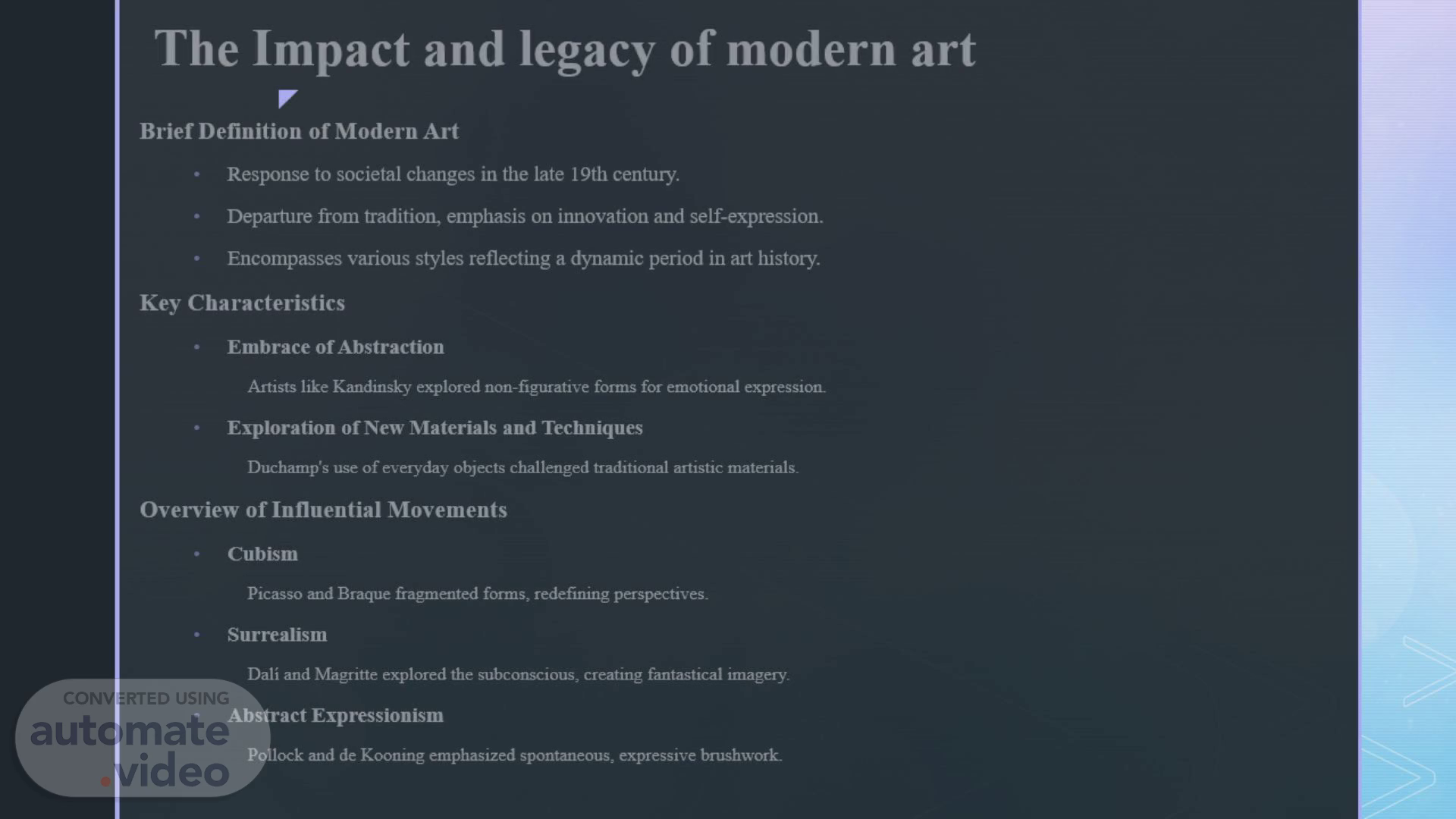
Page 1 (0s)
[Audio] Welcome to our exploration of Modern Art, a dynamic period in art history responding to the profound societal changes of the late 19th century. Modern art is characterized by its departure from tradition, embracing innovation and self-expression. Think of it as a melting pot of various styles. Movements like Cubism, Surrealism, and Abstract Expressionism emerged, each contributing to the rich tapestry of artistic evolution..
Page 2 (31s)
[Audio] In this slide, we'll delve into how artists became innovators, shifting from realism to ion and breaking conventional artistic boundaries. Modern art wasn't just about aesthetics; it addressed societal issues and influenced other art forms, from literature to film. The relationship between artist and audience transformed as art became more democratic, engaging viewers on a personal and interactive level..
Page 3 (1m 1s)
[Audio] Modern art found a home in museums, preserving its revolutionary spirit. It is now an integral part of art history education. We'll explore how modern art's influence extends into contemporary art, shaping the work of artists worldwide. The audience is no longer passive; interactive exhibits and social media platforms have democratized the art experience..
Page 4 (1m 29s)
[Audio] As we conclude, recognize that the impact of modern art endures, transcending time and influencing artistic expression across generations. The diversity within modern art ensures a broad spectrum of creative expression, accommodating various perspectives and voices. Modern art acts as a bridge connecting historical roots to the dynamic, ever-evolving landscape of contemporary artistic practices. By challenging norms, modern art inspires future artists to question, innovate, and contribute to the ongoing narrative of artistic evolution. As we reflect on the impact and legacy of modern art, let it be a call for each viewer to explore, interpret, and appreciate the rich tapestry of artistic expression that continues to shape our understanding of the world..